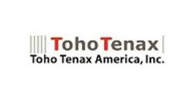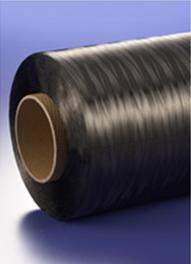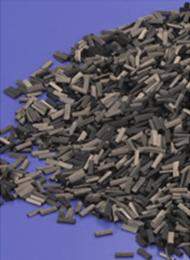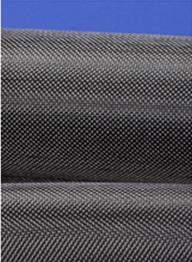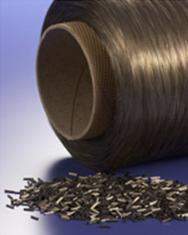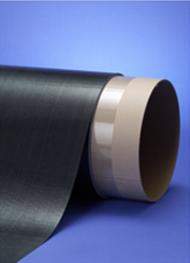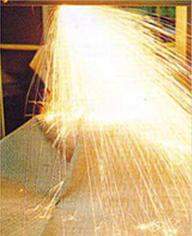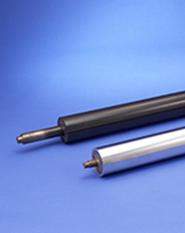Toho Tenax America produces high-quality carbon fiber for a number of sectors, including shipping, aerospace and the automotive industry.
Carbon fiber utilised as natural gas storage
Carbon fiber has a number of different uses. It can be utilised in pressure vessels and tanks for natural gas storage, for civil engineering applications such as bridge repair, and repairing building damage, such as masonry and corrosion problems. It is also being considered for industrial gas storage.
In cars and trucks, fiber is viewed as a replacement for high-strength steel, aluminium and titanium, where reduced weight and greater stiffness are much sought-after traits. The use of carbon fiber to stiffen structures, frames, crossmembers and beams (i.e., bumper beams and door beams) can lead to reduced noise, vibration and harshness (NVH).
Carbon fiber has historically been used to make high-performance pre-impregnated materials using solution and hotmelt processing.
It is also used in filament winding, resin transfer moulding (RTM), vacuum-assisted RTM (VARTM), and SCRIMP, the pultrusion processed and other resin infusion processes, such as RIM and SRIM.
Carbon fiber may also be woven or braided to form into fabrics, braids, multi-axial fabrics, or stitch-bonded fabrics, and also into speciality paper and other forms of non-woven fabrics
The fiber can further be used in combination with thermoset resins such as:
- Epoxy
- Bismaleimide (BMI)
- Phenolic resins
- Polyurethane
- Polyester (PET)
- Vinyl ester
- Polyimide resins.
It can also be used with the full spectrum of thermoplastic resins, such as:
- Acetal resins
- Polypropylene
- Polycarbonate
- Nylon
- Acrylonitrile butadiene styrene (ABS)
- Polyethersulfone (PES)
- Polyetherimide (PEI)
- Polyetheretherketone (PEEK)
- Polyetherketone-ketone (PEKK)
- Polyphenylenesulfide (PPS).
Carbon fiber can also be used as long-fiber compounds, also known as long-fiber reinforced thermoplastics (LFRT) and has even been used to reinforce metal matrix composites and ceramic matrix composites.
PAN-based carbon fiber as a metal substitute
In 1975, Toho Tenax America began mass production of the polyacrylonitrile (PAN)-based carbon fiber TENAX, which can serve as a substitute for steel and other metals, and glass fiber.
It has a number of beneficial properties, including high in-tensile strength, and outstanding dimensional stability.
TEXAX also has exceptional electromagnetic shielding performance and X-ray penetrability.
Carbon fiber with high tensile strength
Carbon fiber is a state-of-the-art material with high tensile strength, high tensile modulus, and many other excellent properties. It is now regarded as an indispensable element in the aircraft / aerospace, sports, and recreation industries. The firm is also constantly searching for new applications in civil engineering, construction, and other industries.
Toho Tenax considers carbon fiber the core of its business. The potential applications of the material is virtually limitless.
The company will continue to make every effort to optimise its potentiality by further improving its high technology and R&D ability, and by using its 25 years of experience as a pioneer in the carbon fiber industry.
High-quality PAN engineering for carbon fiber production
High-quality PAN, engineered specifically for carbon fiber production, is the precursor fiber. The PAN precursor is stretched and tensioned to optimise molecular and structural orientation.
Online quality control of the PAN precursor ensures process continuity and efficiency. The precursor is exposed to heated air to turn it into oxidised polyacrylonitrile fiber (OPF), which has excellent heat and flame-resistant properties.
The OPF is carbonised into carbon fiber by exposing it to progressively higher temperatures in a nitrogen-filled chamber. The carbon fiber receives final carbonisation at more than 1,000°C to establish strength, stiffness and other properties.
The carbon fiber is surface-treated or etched to create a surface that will bond effectively. Polymer coating (sizing) is applied to promote fiber-handling characteristics, wet-out and bonding.
Continuous fiber is wound onto spools for direct sale to pre-preggers, weavers, filament winders, and pultruders. The fiber can also be chopped, milled, or pelletised.

